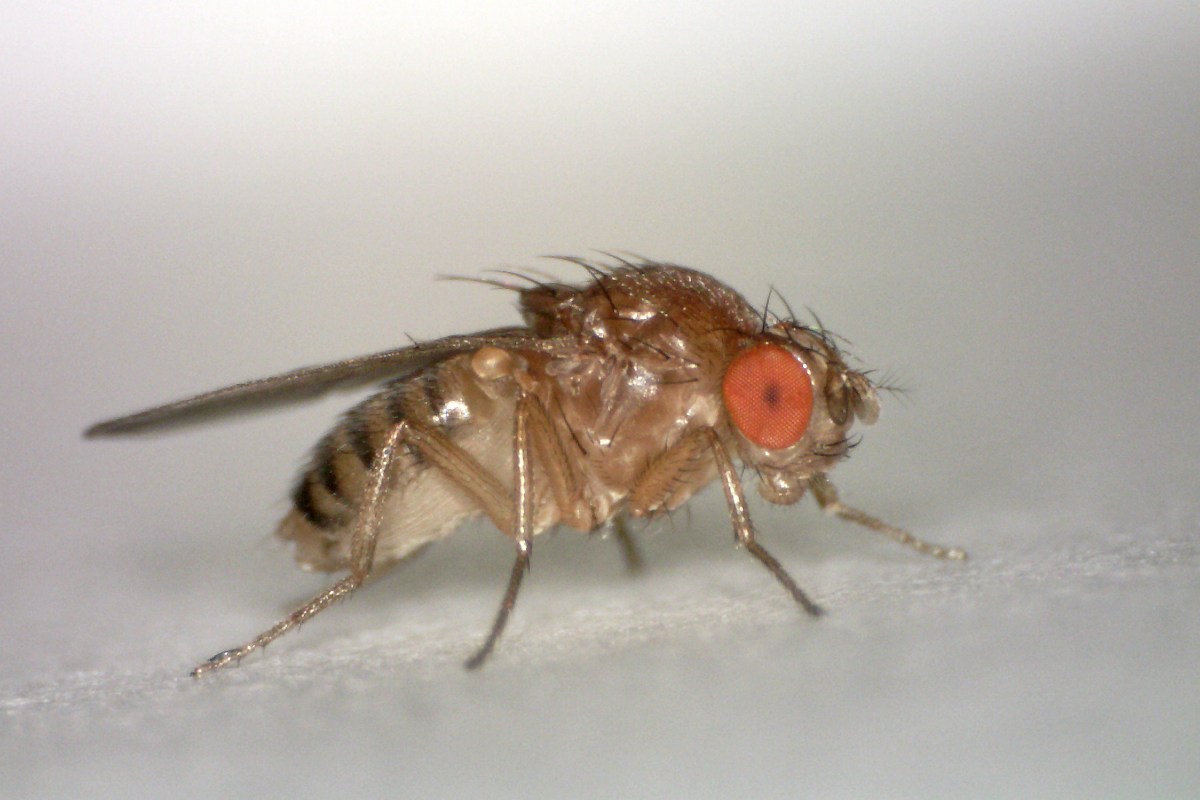
New research sheds light on stem cell proliferation and terminal differentiation in fruit flies, with implications for human health. Photo credit: Hannah Davis / CC 4.0
Scientists have found a new mechanism responsible for regulating stem cells in fruit flies, with possible implications for cancer therapies. The study, published by University of Alberta biologists, identifies an inhibition mechanism of an enzyme called Myt1 kinase, which manages how stem cells develop and differentiate during organ development in fruit flies.
“In addition to furthering our understanding of developmental biology in fruit flies, this discovery is highly relevant to cancer research, where Myt1 is being scrutinized for its role in ‘checkpoint’ mechanisms that govern entry into mitosis,” said Shelagh Campbell, professor emerita of the Department of Biological Sciences and member of the research team.
Campbell explains that these checkpoint mechanisms balance cell growth and differentiation as an organism develops, and are required for development of organs and tissues with appropriate size and function.
“This study shows how Myt1 regulates the cell cycle to allow cell differentiation, with defects in this process causing hyperproliferation and organ dysplasia,” said Campbell. “This greater understanding of Myt1 in fruit flies can be expected to benefit the development of effective cancer therapies with checkpoint inhibitor drugs.”
How cells grow
Even in organisms as diverse as humans and fruit flies, adult stem cells produce progenitor cells that differentiate into specialized types to regenerate intestinal cell walls, balancing cell loss by injury, infection, and aging with new growth.
“Using fruit flies as a model, graduate student Reegan Willms discovered that loss of Myt1 caused hyperproliferation of intestinal stem cells and progenitor cells,” said Campbell. “Working with postdoctoral researcher Jie Zeng, Willms demonstrated that Myt1 is critical to inhibiting this process during normal cell growth.”
The study complements a recent collaboration with members of the Gordon Chan and Armin Gamper, faculty members of the Faculty of Medicine & Dentistry in the Department of Oncology The findings build on research of three Faculty of Science PhD students over 20 years; Zhigang Jin, who created the original genetic model for studying Myt1, Joseph Ayeni, who characterized the biochemical mechanism and Ramya Varadarajan, who first demonstrated that Myt1 could inhibit Cyclin A/Cdk1. The team is also contributing members of the Cancer Research Institute of Northern Alberta.
The study was funded by a Discovery grant and graduate student fellowship from the Natural Sciences and Engineering Research Council of Canada.
The paper, “Myt1 kinase couples mitotic cell cycle exit with differentiation in Drosophila,” was published in Cell Reports. (doi: 10.1016/j.celrep.2020.108400)